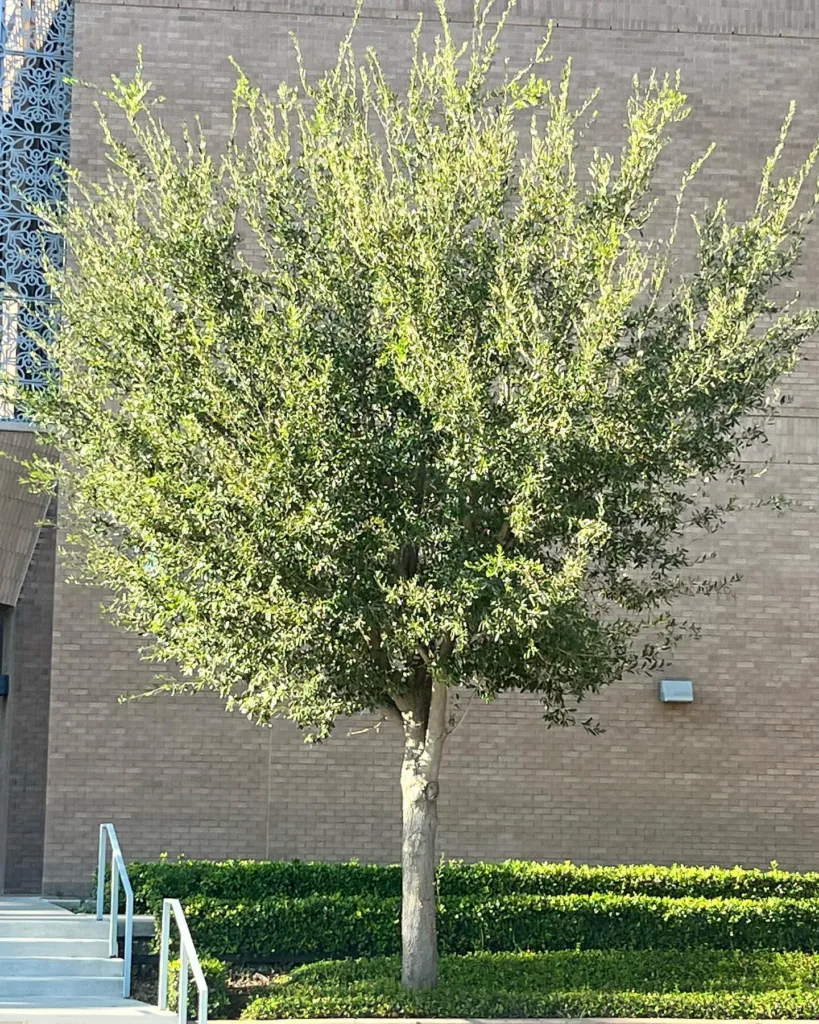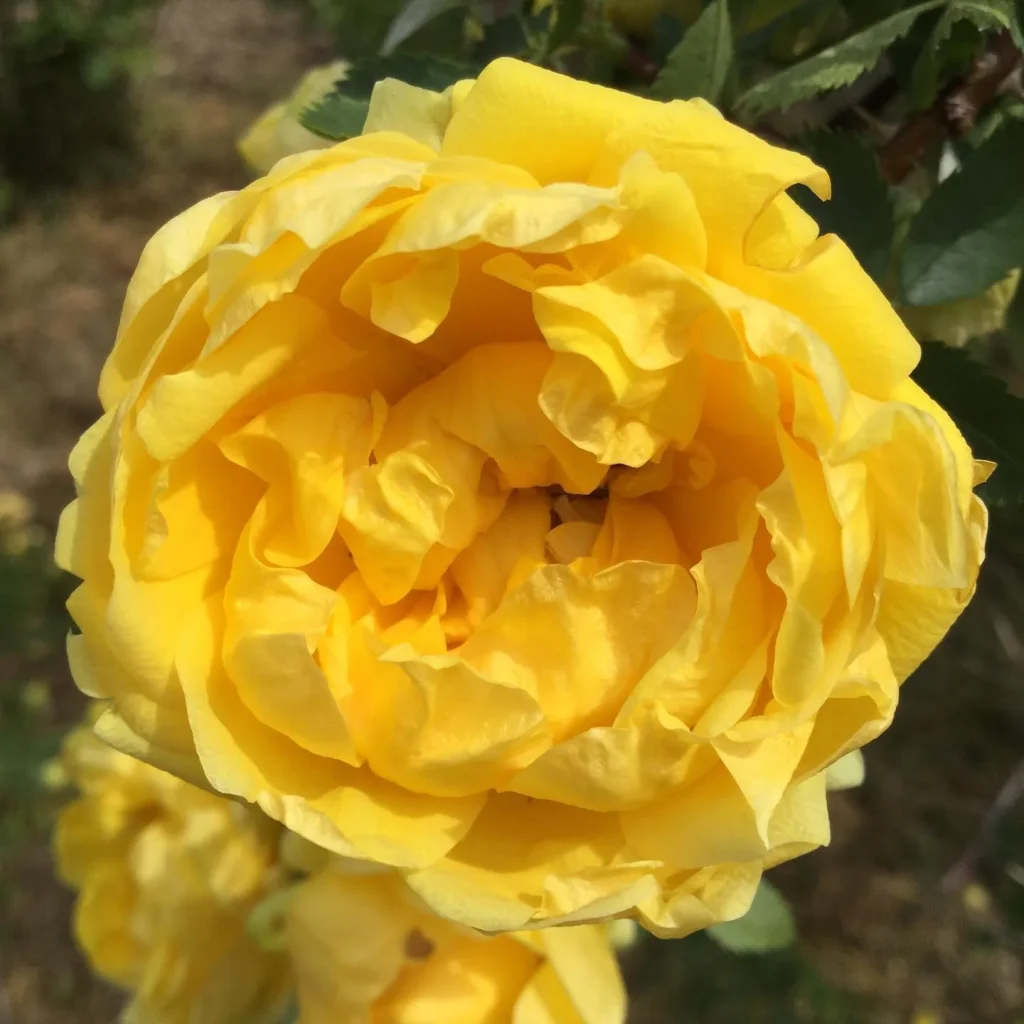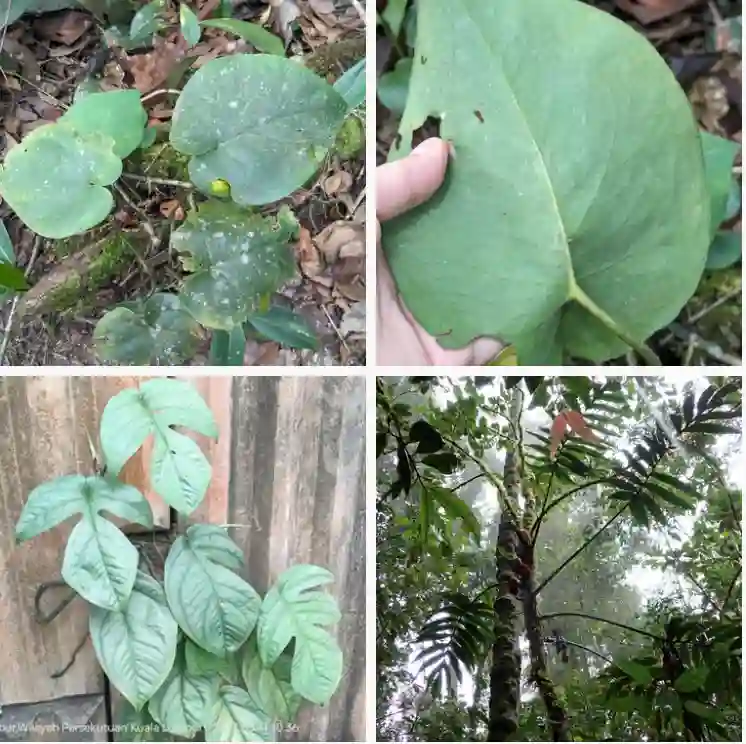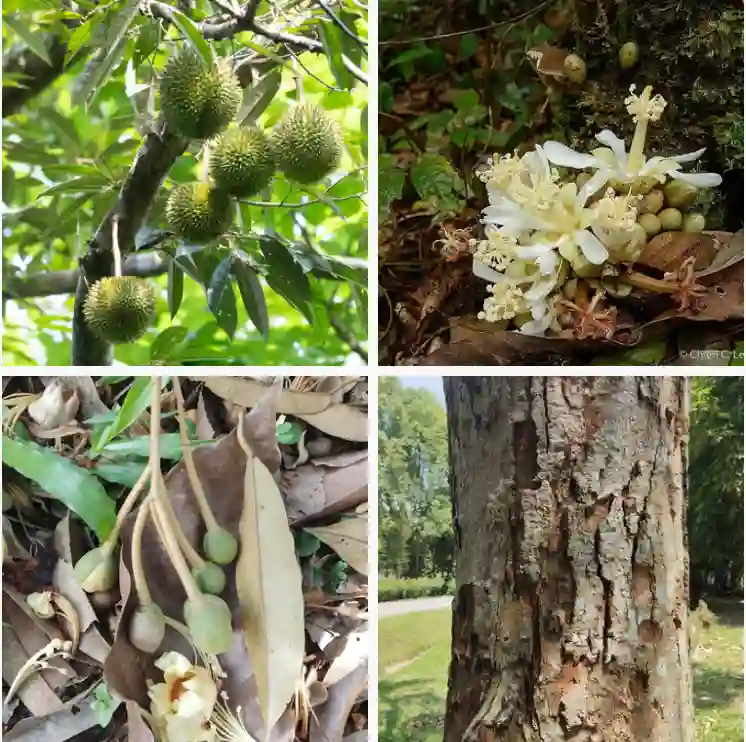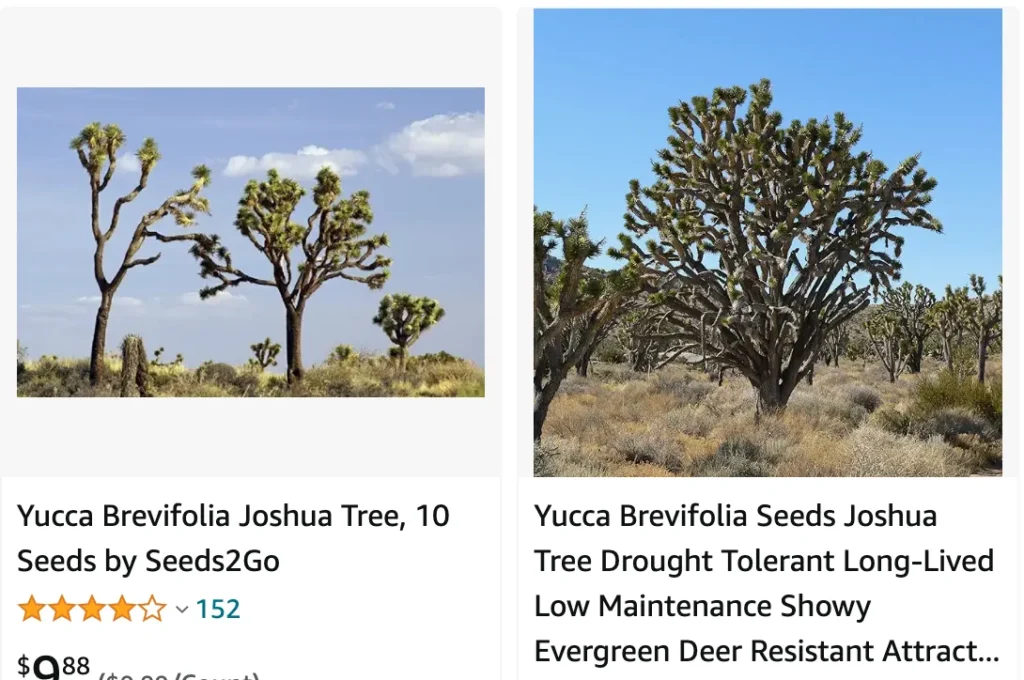
54 Species in Genus Yucca
What is a joshua tree?
Joshua trees – Yucca Brevifolia, always make me think of wide-open spaces and the unique beauty of the desert. When we took a road trip through Southern California a few years back, I was so excited to finally see them in person. There’s a bizarre, almost alien charm about them – the way those spiky branches twist and reach upward, and the strange clusters of Yucca flowers. Seeing them scattered across those dusty plains under a blazing desert sun made me feel both exhilarated by the landscape and deeply peaceful somehow. Joshua trees hold a whole different kind of magic than other trees.
Joshua Tree vs Mojave Yucca
I find that Joshua Trees and Mojave Yucca are often mistaken for each other, but after spending time in both, I appreciate how Joshua Trees have a more rugged, sculptural look with their branching limbs, while Mojave Yuccas have a more streamlined, sword-like appearance that I think stands out beautifully in the desert landscape.
Joshua Tree vs Palm Springs
When comparing Joshua Tree to Palm Springs, I’ve felt that Joshua Tree offers a more wild, raw desert experience with its stark, dramatic rock formations and wide-open spaces, whereas Palm Springs feels more like a well-manicured retreat with its modern amenities and lush landscapes contrasting the surrounding arid environment.
Joshua Tree vs Yosemite
In my experience, Joshua Tree’s otherworldly rock formations and expansive desert vistas are a stark contrast to Yosemite’s lush, verdant valleys and towering granite cliffs; both are breathtaking, but Joshua Tree’s unique, stark beauty feels more alien and surreal compared to the classic grandeur of Yosemite’s mountainous scenery.
Where do joshua trees grow?
The first time I saw Joshua trees was in Joshua Tree National Park – that’s kind of a giveaway! I still remember driving through the Mojave Desert, that stark, rocky landscape stretching for miles. Then suddenly, these strange, almost cartoonish trees would pop up, clinging to hillsides and dotting the desert floor. I’d always imagined stark, empty deserts when I thought about the Southwest. But there’s life there, and Joshua trees are proof of just how resilient nature can be, thriving in such a harsh environment.
Why is it called joshua tree?
Honestly, the story behind the name Joshua tree always makes me smile. Apparently, it was a group of Mormon settlers traveling west across the Mojave Desert who gave them that name. I imagine them weary and parched from their long journey, when they finally spotted these weird-looking trees. The twisted branches reaching upward supposedly reminded them of the Biblical story of Joshua leading his people, arms outstretched toward the Promised Land. It’s a picture of hopefulness and faith, tied into the landscape itself.
Is a joshua tree a cactus?
This actually tripped me up when I first learned about Joshua trees! While they certainly have a spiky, desert-y vibe that we associate with cacti, they’re actually part of the Yucca family, a type of succulent. To be honest, even now, I have to remind myself that they aren’t a true cactus when I see them. Maybe that’s why they stand out so much, they look tough and prickly enough to be a cactus, but they’ve got their own unique twist!
Is joshua tree safe?
For the most part, Joshua Tree is a safe place to visit, especially if you’re talking about Joshua Tree National Park. I’ve hiked there several times and always felt pretty comfortable. But, it is important to remember you’re in the desert, which has its own set of hazards. Extreme heat and dehydration are real risks, so prepare with tons of water and sun protection. There are also rattlesnakes and other wildlife to be aware of. Really, it’s about respecting the environment and being prepared for the challenges it presents, not being scared of it.
Can you buy a joshua tree?
You can actually buy Joshua trees! I was a bit surprised when I found out. There are nurseries that specialize in desert plants where you can find them. Of course, they can be pretty expensive, and I imagine getting a full-grown Joshua tree into your yard is no small feat! I’ve also seen kits for growing them from seeds. It makes me curious – it would be quite something to see one of these iconic trees grow from the ground up in my own yard, even if I don’t live in the desert.
Is joshua tree dog friendly?
Unfortunately, Joshua trees themselves might not be the best environment for dogs. The spiky leaves can be quite sharp, which could accidentally hurt a curious pup if they get too close. Additionally, some varieties of yucca (the family Joshua trees belong to) can be toxic if ingested by dogs. It’s best to keep your dogs at a safe distance to avoid any mishaps and protect both your pet and the unique beauty of the tree.
What is the joshua tree in the bible?
The Joshua tree in the Bible is something that has always fascinated me. Growing up, I remember hearing stories about it in Sunday school and seeing pictures of it in books. But it wasn’t until I visited the Holy Land that I truly understood its significance. Standing amidst the arid landscape, I saw these majestic trees, twisted and gnarled, yet resilient and enduring. Learning about its namesake, Joshua, the great leader who guided the Israelites into the Promised Land, added a layer of depth to my understanding. The Joshua tree symbolizes strength, perseverance, and God’s faithfulness in fulfilling His promises. It’s a tangible reminder of the journey of faith and the triumph over obstacles, resonating with me on a spiritual level.
When do joshua trees bloom?
Joshua trees bloom in the springtime, typically between March and May. I vividly recall one spring when I ventured into the desert to witness this extraordinary event. The anticipation was palpable as I watched the landscape transform with the arrival of delicate white flowers adorning the branches of the Joshua trees. It was a breathtaking sight, contrasting against the stark desert backdrop. The blooms seemed to signal hope and renewal, a reminder that even in harsh environments, life finds a way to flourish. Witnessing the Joshua trees in bloom was a profound experience that left an indelible mark on me, a reminder of the beauty and resilience of nature.
Where is the oldest joshua tree?
The oldest Joshua tree, known as the “King of the Forest,” resides in California’s Mojave Desert, within Joshua Tree National Park. I had the privilege of visiting this ancient giant during a trip to the park. Standing in its presence, I felt a sense of awe and reverence for its age and resilience. Estimated to be over 1,000 years old, this iconic tree has weathered centuries of harsh desert conditions, bearing witness to the passage of time. Its gnarled branches and weather-beaten trunk tell a story of endurance and survival, serving as a testament to the tenacity of life in the desert. Seeing the oldest Joshua tree was a humbling experience, connecting me to the rich history and natural wonders of the desert landscape.
What does the joshua tree symbolize?
For me, the Joshua tree holds deep symbolic significance. It represents resilience, strength, and endurance in the face of adversity. Much like the biblical figure it’s named after, Joshua, who led the Israelites to the Promised Land, the Joshua tree embodies the spirit of perseverance and triumph over challenges. Its ability to thrive in the harsh desert environment serves as a powerful reminder that even in the most difficult circumstances, life can flourish. The tree’s unique shape, with its twisted branches reaching towards the sky, speaks to the human spirit’s capacity to endure and overcome obstacles. For me, the Joshua tree is a symbol of hope, resilience, and the promise of new beginnings, making it a source of inspiration in both my spiritual and personal journey.
If i die, water my plants!
